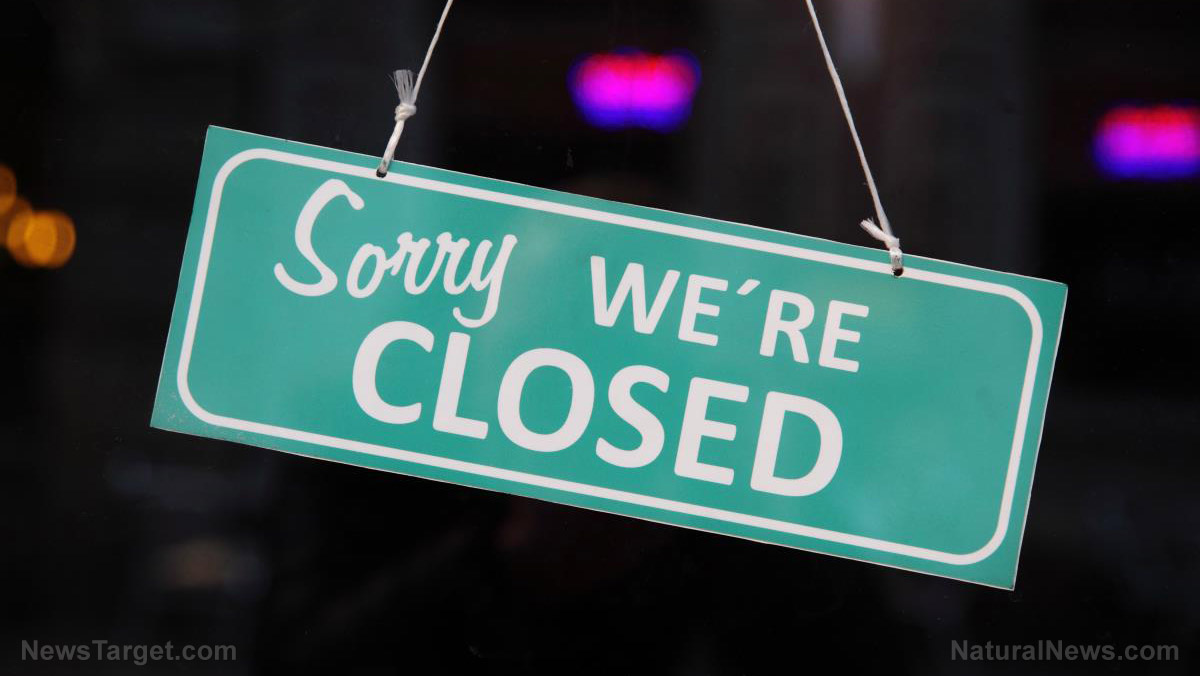
The United States is witnessing a rapid decline in the country's restaurant industry, notable as a bellwether for gauging the health of the U.S. economy.
During economic prosperity, restaurant parking lots are packed and new locations are rapidly popping up. Conversely, during economic downturns, restaurants see a significant drop in patrons and struggling locations often close their doors.
Unfortunately, 2024 seems to be witnessing a widespread “restaurant apocalypse” across the United States. The ongoing cost of living crisis has left many people with minimal disposable income, particularly affecting young adults. Individuals under 40, who traditionally enjoy dining out, are now facing financial hardships This trend is profoundly impacting the restaurant industry – leading to decreased traffic and numerous store closures.
"People are spending more, but they’re not spending it at restaurants," said chef David LeFevre. (Related: Restaurant industry collapsing across the US, with several popular chains permanently CLOSING DOWN numerous locations.)
LeFevre observed that many patrons have chosen to invest in their homes during the Wuhan coronavirus (COVID-19) pandemic, leading them to prefer spending time at home, especially in the evenings, to enjoy the upgrades they've made. This shift has significantly impacted dining patterns and restaurant revenue.
According to various chefs, the pandemic also altered the typical dining hours in Los Angeles.
"People don't go out to dinner late anymore. If you compare 2019 to today, reservations after 8 o'clock have drastically declined. Reservations after 8:30 p.m. are now only 50 percent of what they used to be, and that is a significant change," LeFevre explained.
In addition to changes in dining times, the pandemic influenced where diners choose to spend their money. Many people are now saving to travel and spend on dining experiences in different locales rather than eating out locally. Post-pandemic diner expectations have also evolved – particularly regarding outdoor dining. LeFevre and his team have had to adapt to these new preferences.
While all of his restaurants survived the pandemic, their success varied. Despite these challenges, LeFevre remains optimistic.
"Sometimes you have to change the lens you look through. There are big challenges, especially in California, but there’s a lot of optimism because I know how great it can be." LeFevre said.
Rising costs and minimum wage increases
In addition to shifting dining preferences, the restaurant industry faces rising costs and changes in minimum wage laws. Federal minimum wage remains at $7.25 per hour, but 25 states saw their minimum wage increase in 2024. California raised its hourly minimum wage from $15.50 to $16, trailing only Washington, D.C. and Washington state.
The city of Los Angeles will increase its minimum wage to $17.28 per hour and specialized fields in areas like Long Beach will see further wage hikes later this year. While these increases aim to improve livability in expensive cities, many restaurateurs see them as financial burdens in an industry already operating on thin margins.
AB 1228, a new California law, raised the minimum wage specifically for fast-food chain workers to $20 per hour for restaurants with more than 60 locations nationwide, affecting about half a million workers. This has led some franchises, like Pizza Hut, to lay off delivery drivers and switch to delivery apps, while others have increased prices or implemented automation to reduce human staff.
"Gas isn’t going down, rent isn’t going down," said Mysheka Ronquillo, a cashier and cook at Carl’s Jr. in Long Beach. The Fight for $15 and a Union in California, along with other trade unions, celebrated AB 1228 as a victory, arguing that many low-wage workers are just one paycheck away from homelessness.
Unite Here Local 11, representing over 32,000 hospitality workers, argues that pushback on wage increases primarily comes from larger entities rather than small businesses. The union highlighted West Hollywood's boom in new business permits after raising its minimum wage to $19.08 per hour, the fourth-highest in the country.
However, some restaurateurs in West Hollywood have had to limit hours, raise prices, or cut staff to cope with the wage hike. Craig Susser, owner of Craig’s, reduced his servers from 12 to nine to offset the increase.
As the industry navigates these changes, restaurant owners must balance financial stability, compliance with new regulations and fair employee compensation and benefits.
Watch the following video about "Restaurant apocalypse – The unstoppable collapse."
This video is from the Daily Videos channel on Brighteon.com.
More related stories:
Major Burger King franchisee files for BANKRUPTCY as fast-food industry faces doom of “Bidenomics.”
Sources include:
Please contact us for more information.




















